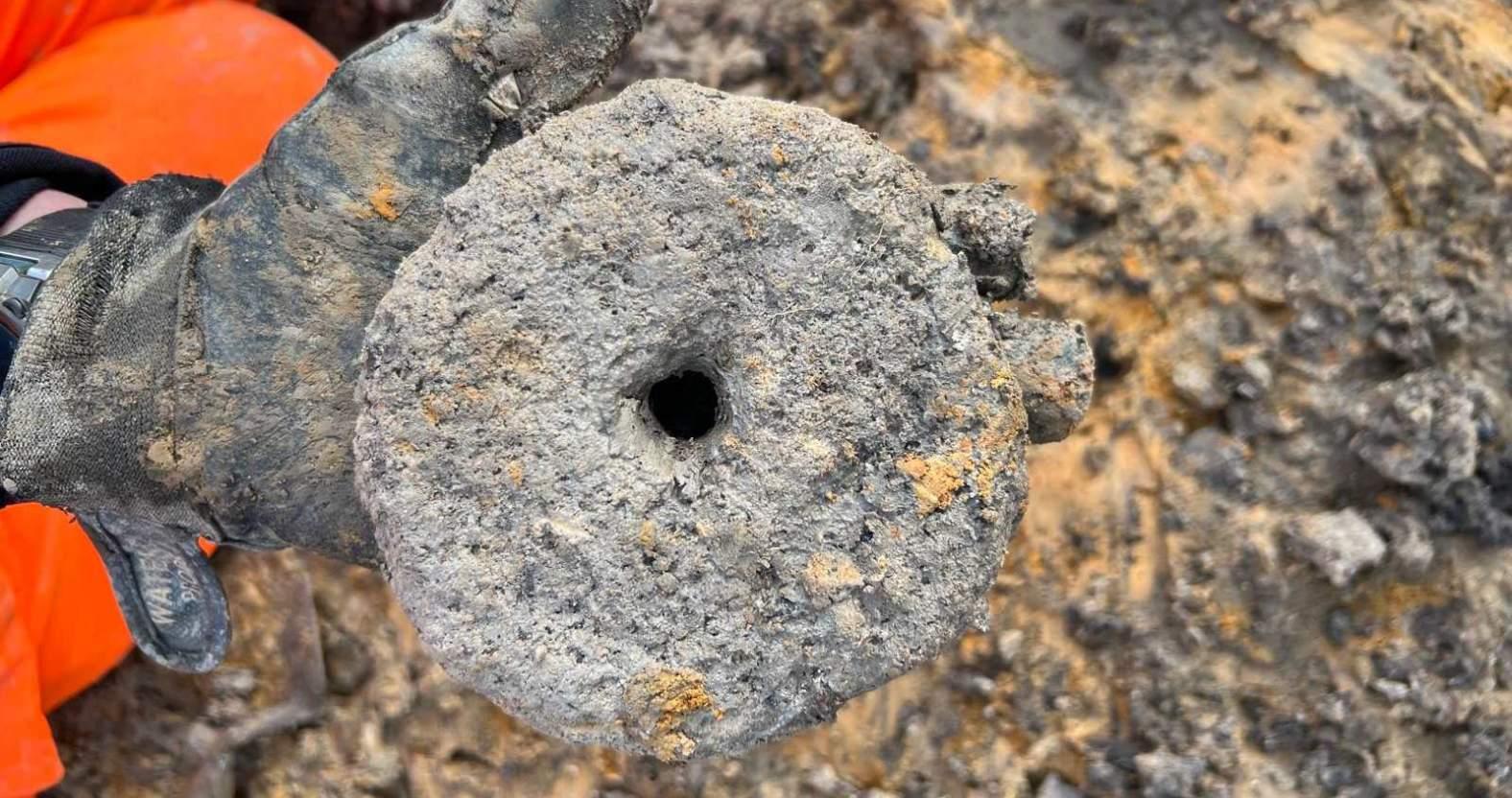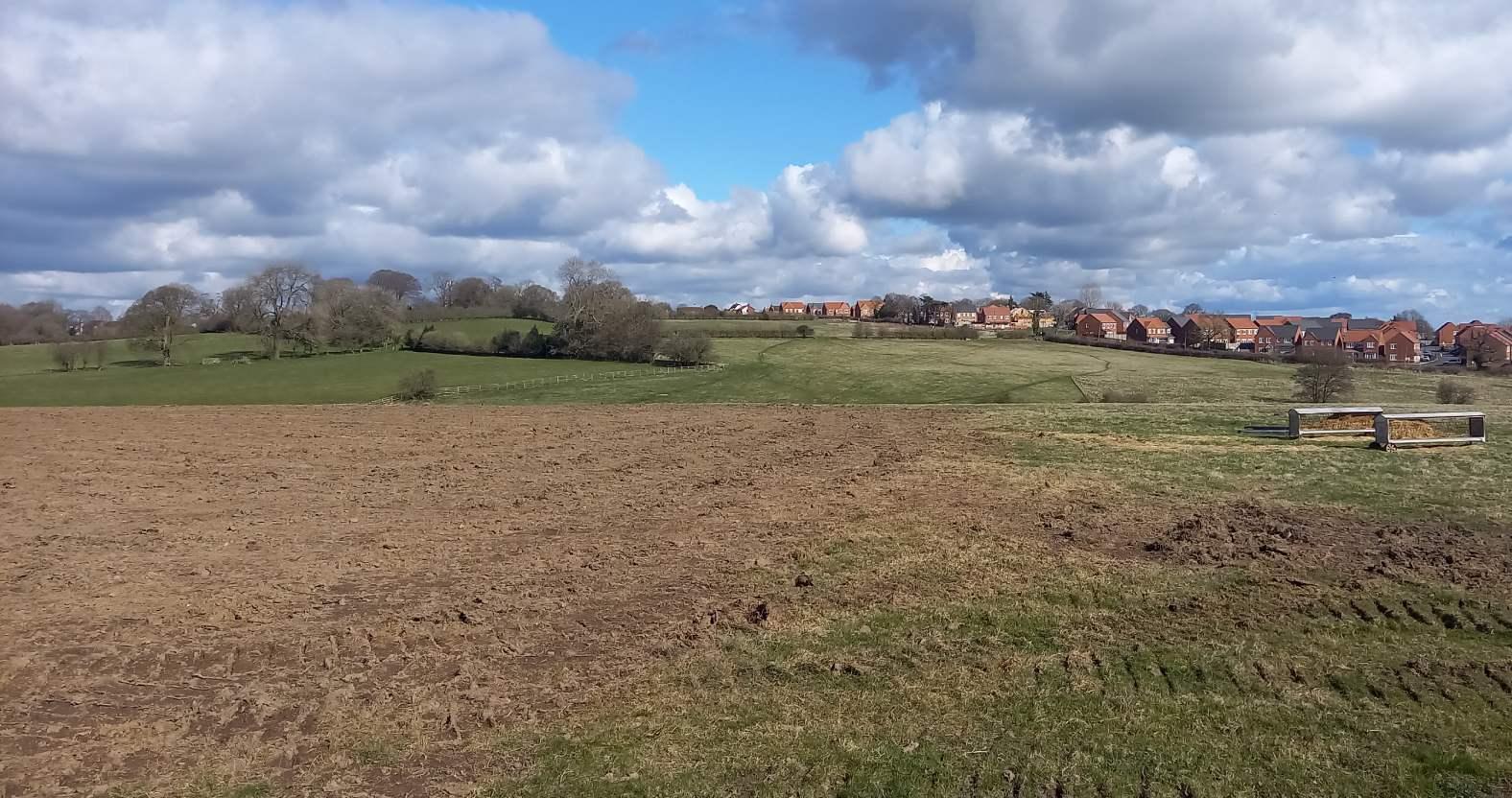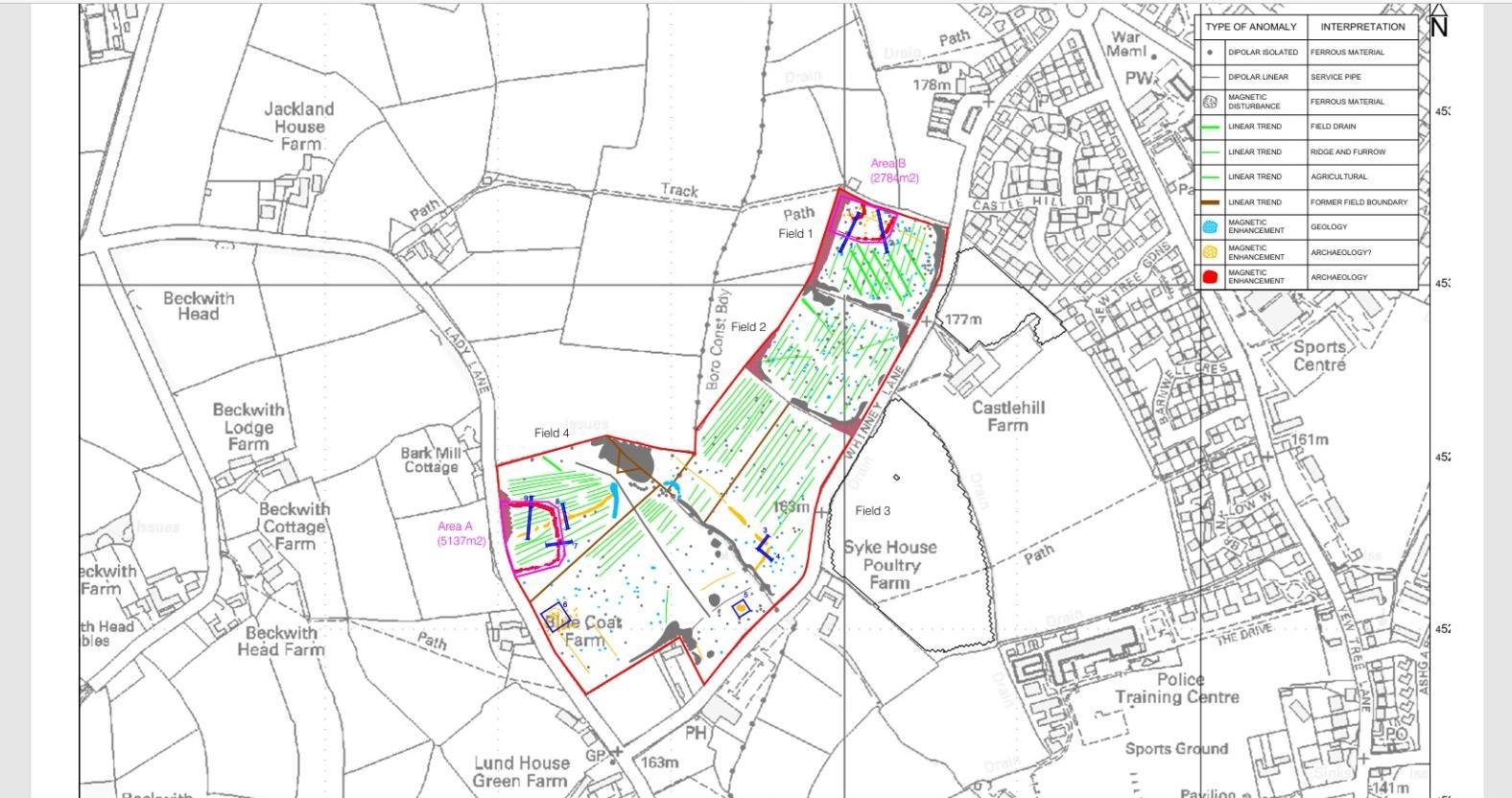Subscribe to trusted local news
In a time of both misinformation and too much information, quality journalism is more crucial than ever. By subscribing, you can help us get the story right.
- Subscription costs less than £1 a week with an annual plan.
Already a subscriber? Log in here.
23
Jul
Iron Age hill settlement discovered on Harrogate school site

A crucial piece of Harrogate’s history has been unearthed, with the positive identification of an Iron Age settlement perched at its highest point.
As the Stray Ferret reported in February, archaeological experts were called in to the site at Castle Hill, off Whinney Lane, by housebuilder Banks Group, which intends to build on it.
A team from Archaeological Services WYAS (ASWYAS) excavated two areas over the winter, and has just completed its report for the housing company.

The excavation site at Castle Hill, off Whinney Lane in Harrogate.
In a town best known for its relatively recent spa heritage, the findings provide a fascinating glimpse into its far more ancient past, and the lives of the people who lived there.
The full report has not yet been released, but Kevin Moon, senior project manager at ASWYAS, told the Stray Ferret:
The archaeological works revealed the remains of an Iron Age settlement formed of circular houses (roundhouses) encompassed by a large ditch on land proposed for a new school.
The excavation demonstrated that the inhabitants of the settlement practised animal husbandry (cattle and sheep/goats), ground cereal into flour, weaved cloth and undertook iron smithing.
A large enclosure, probably from the same era, was also found at the other dig, down the hill in the south-west corner of Banks Group’s plot, but Mr Moon said that not much had been found within it, and that the “interesting parts” had probably not survived.

The site of the secondary dig, with Castle Hill visible at the top of the slope in the distance.
The Iron Age in Britain began around 750BCE with the introduction from southern Europe of iron-working techniques, and lasted until the Romans invaded in CE43.
At that time, the population of what we now know as England were Britons – also referred to as Brythonic Celts – whose best-known descendants today are the Welsh. The area now called Yorkshire was controlled by the Brigantes, the largest tribe in pre-Roman Britain.
Castle Hill is at the same altitude as Harlow Hill, making it one of the highest points for miles around.
Iron Age tribes often chose to build settlements at high vantage points as they were easier to defend.
Although the settlement’s people left Castle Hill at some point, its structure appears to have remained sufficiently intact to give the place its current name.
Mr Moon said:
The site was abandoned in the Iron Age and there was no evidence of later Roman activity; the reason for the abandonment of the site remains unknown.
The associated bank of the large encompassing ditch, which the archaeologists demonstrated survived for hundreds of years into the post-medieval period, may be the reason the area is now known as Castle Hill.

The Banks Group plot, with the archaeological dig sites in pink. Castle Hill is the one at the northern end. Image: Archaeological Services WYAS.
The ASWYAS report has been passed to North Yorkshire Council for review and the site will be entered into the Historic Environment Record (HER) for the county, although it has now been cleared for construction.
Banks Group has applied for planning permission to build 224 homes and a primary school on the site, which is the largest of three allocated for housing around the ‘western arc’ of Harrogate.
Justin Hancock, principal development planner at Banks Group, said:
It’s been a fascinating and very informative archaeological dig, and it’s been really good to be able to find out what there is on the site.
Asked if the new streets on the development would be given names to reflect this history of the place, he said:
It’s a bit early to say, but it’s a good idea. We’re probably not going to build any roundhouses there, though – I think we’ve moved on from those.
0